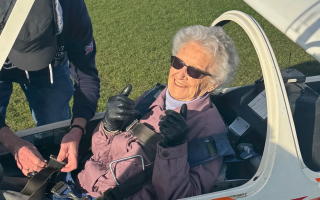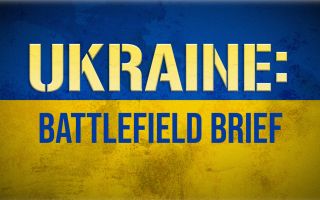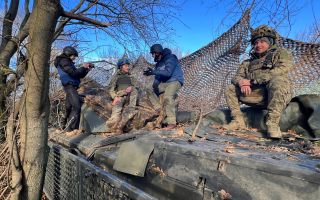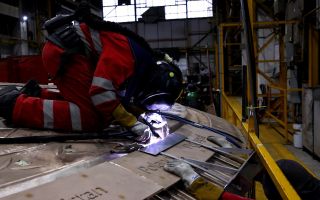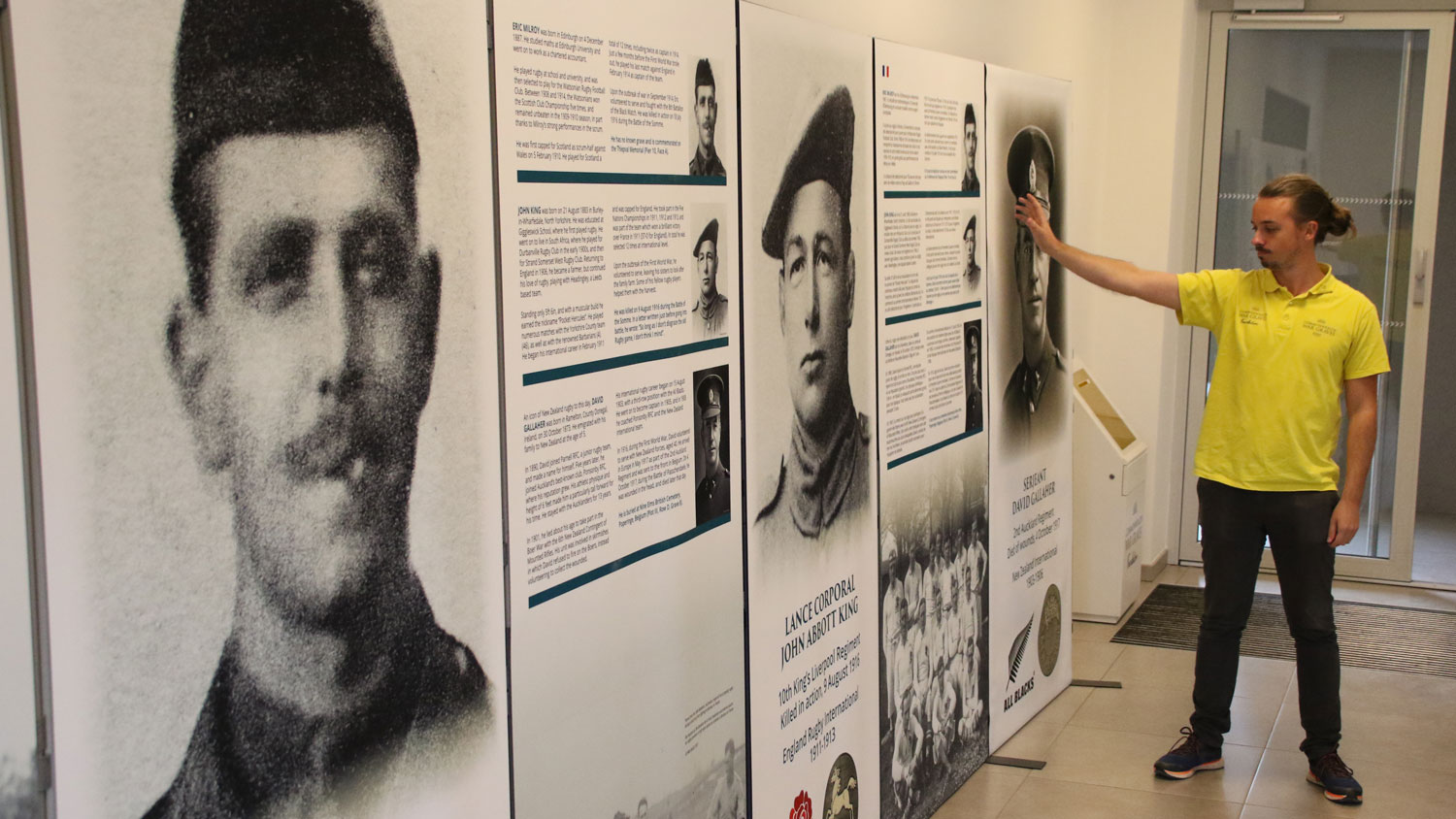
Beyond The Pitch: Remembering the rugby players who died on the battlefields of the First World War

The Commonwealth War Graves Commission (CWGC) is sharing stories of several professional rugby players who fought and died during the First World War to mark the 2023 Rugby World Cup.
One of CWGC's missions is to ensure the stories of those who made the ultimate sacrifice remain ever present in our lives, so their memories are preserved for future generations.
To do this, men such as England Rugby international Lance Corporal John Abbott King, Scotland Rugby international Second Lieutenant Eric Milroy and New Zealand Rugby international Serjeant David Gallaher are being honoured in the new CWGC project Beyond The Pitch.
Beyond The Pitch is designed to shine a spotlight on the men whose promising rugby careers were cut short when they died on the battlefield.
Below, we explore the close relationship between rugby and military service and share the inspiring stories of LCpl King, 2Lt Milroy, and Sjt Gallaher.
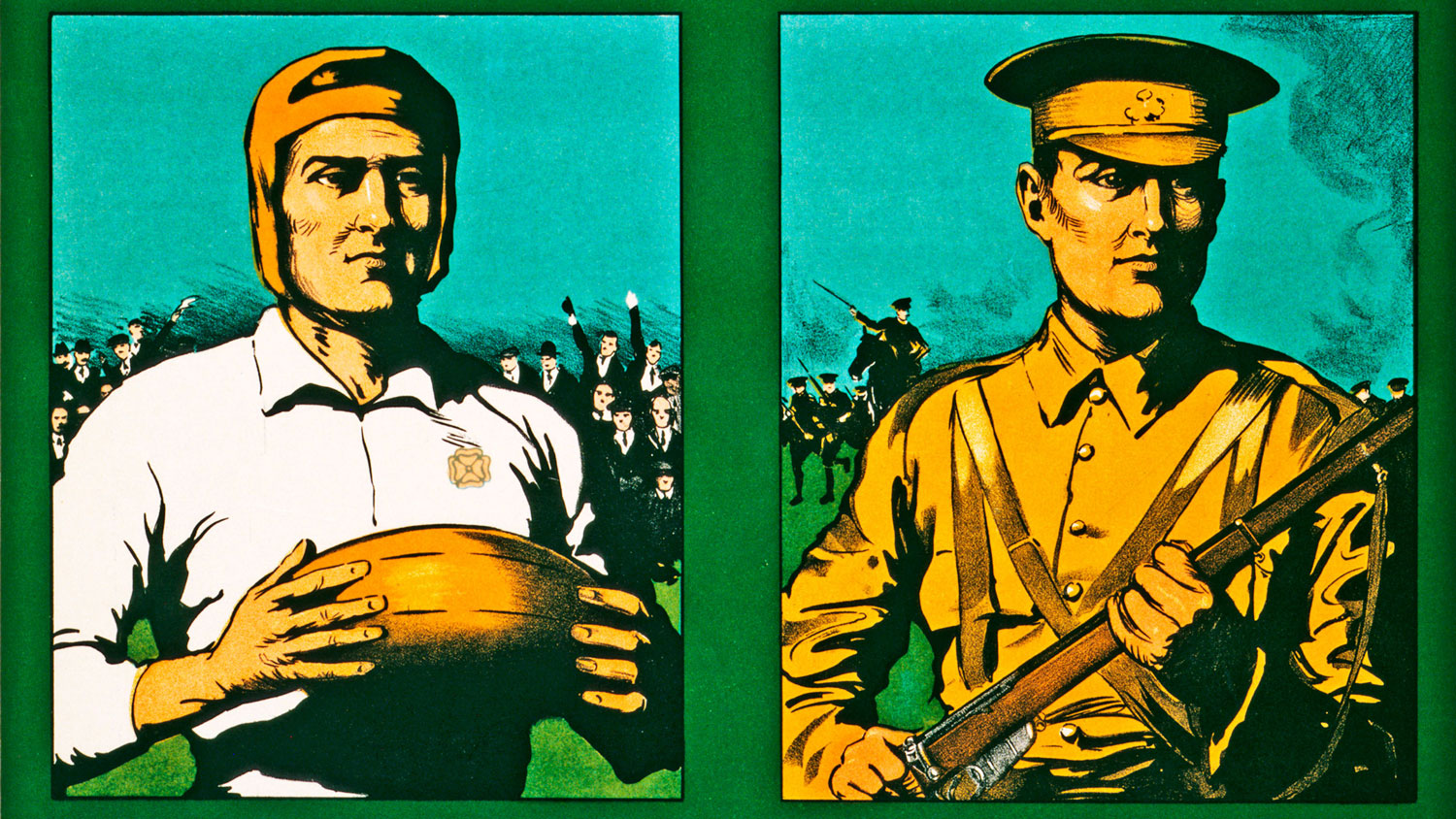
Lynelle Howson, a Commonwealth War Graves Commission historian, spoke with Forces News about the connection between rugby and natural leaders on the battlefield, saying: "If there had been no war, we would have seen them using that leadership in their civilian roles, either in their professions or in their communities, and achieving great things in other ways.
"But because of the time that it happened to be and what was going on in their world at the time, they took those leadership skills and their ability to work with other men and their resilience that comes from working together, facing defeat, but seeing that the next time you face the team, you might be able to win.
"I think they took that and it was incredibly valuable in the hands of the Armed Forces in that world war.
Rugby also played a vital role in keeping up troop morale, fitness levels and a competitive spirit during the First World War.
To ensure they could rest, troops on the Western Front would rotate so they weren't always in the trenches.
This meant many of them were in the rear and, during their downtime, would need something fun to keep them occupied.
Ms Howson said: "You're not just going to have them digging extra trenches and carrying stuff around, which they did do a lot, but you are going to do physical activity and competition.
"The New Zealanders, Australians, South Africans and the English were all willing to field a team and allow some of that helpful competitive spirit – hopefully, not too many noses broken – to be enacted away from the difficulties of service."
Rugby and other sports, such as cricket, would give the troops a much-needed break from the difficult aspects of serving in a war and allow people to feel a bit more in touch with their civilian lives.
War diaries show that when units were withdrawn from the frontline for long enough, sports days, often featuring rugby, were regularly organised.
Rugby has had a long-standing connection with the Armed Forces, particularly during the 19th century when there was a strong interest in team sports and its relation to military service.
Rugby and military service share many similarities like teamwork, comradeship, and leadership, plus mental and physical discipline.
Ms Howson said: "People were really interested in the idea that if you were good at the one, you would probably be good at the other.
"And certainly, the stories of all the people that we commemorate, that we can connect with rugby... they're all full of instances of bravery and self-sacrifice and teamwork.
"Ultimately, just making the ultimate sacrifice in terms of joining the armed services in a time that was known to be dangerous, and going out and giving their all to do the job that they were asked to do."
The Commonwealth War Graves Commission is keen for its Beyond The Pitch project to encourage those interested in the Rugby World Cup to visit a CWGC cemetery or just simply be inspired by the service of players of the game.
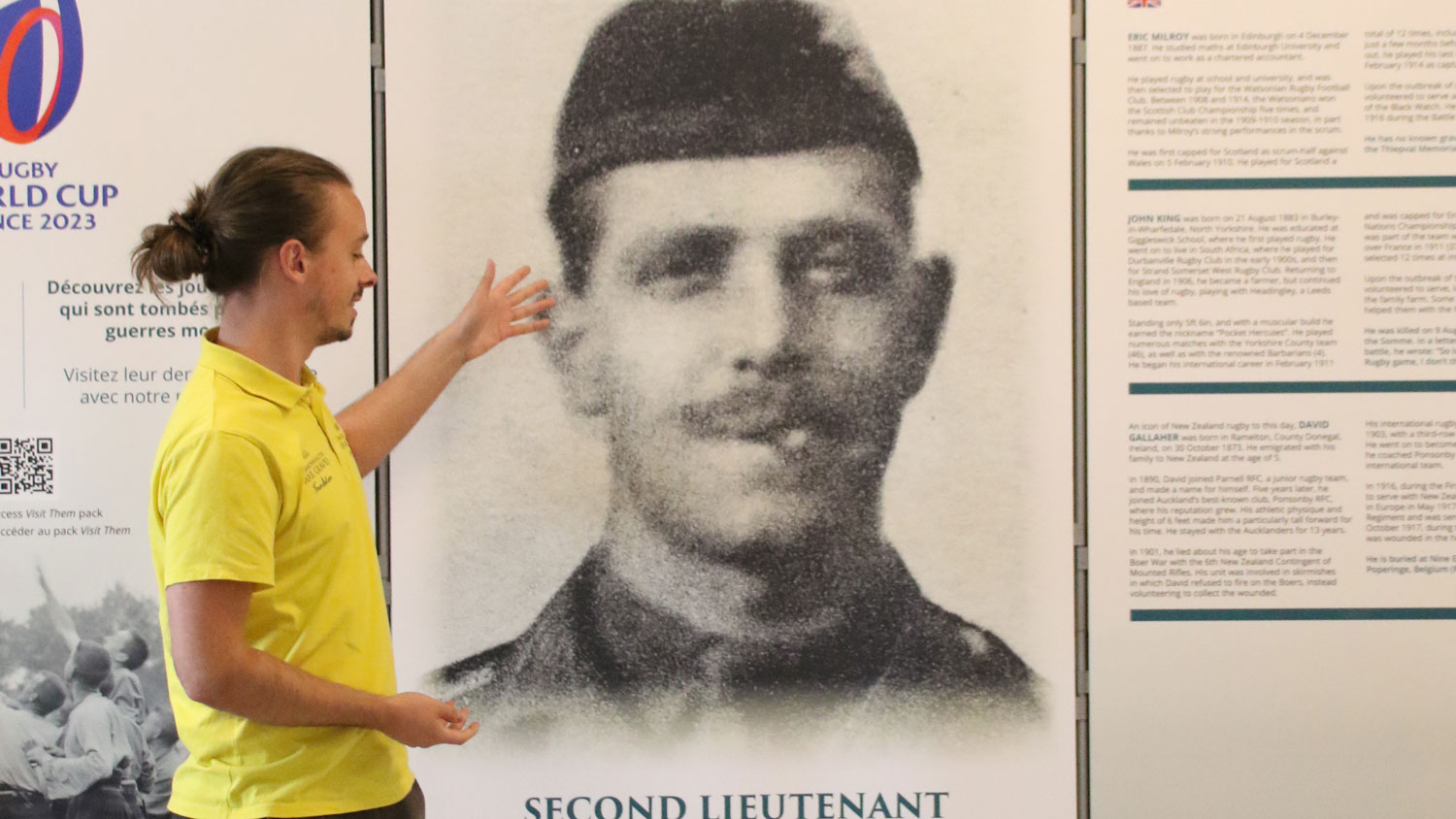
Second Lieutenant Eric Milroy – Scotland Rugby International 1910-1914
During the First World War, thousands upon thousands of bright young men joined the Armed Forces, determined to use the skills they had developed in their civilian life to help win the war.
Before signing up, Eric Milroy had a Master of Arts with honours in maths, worked as a chartered accountant and was considered an exceptional rugby player, having played for Scotland 12 times.
Ms Howson said: "He was quite a versatile person – brilliant in the classroom with mathematics but also brilliant on the rugby pitch as a scrum half and also a talented debater with the Literary Society of Edinburgh University, so one of these really all-round individuals that you often come across when you look at really successful sports people."
During the 1909-1910 season, Milroy's exceptional performance at the base of the scrum was vital in helping Watsonian Rugby Football Club remain unbeaten.
In February 1914, just a matter of months before the outbreak of the First World War in July, Milroy captained Scotland in his last game against England.
In September of that same year, Milroy volunteered to serve.
Less than two years later, 2Lt Milroy, 28, then an officer with the 9th Scottish Division, fought and died in the brutal Battle of the Somme.
The 9th Division was tasked with taking the village of Longueval plus the adjacent wood – this became known as the Battle of Delville Wood.
Holding on to that area involved incredibly hard fighting, as Ms Howson explains, saying: "On the morning of 18 July, which is the day that Eric dies, a huge artillery bombardment opened on them from the Germans.
"Just the biggest, heaviest, most terrible bombardment ever and they were under that level of shell fire for 12 hours.
"At some point in that day of shell fire and very heavy fighting where the elements of the 9th Division, including Milroy's unit, were able to take back the whole village and a large piece of the wood but somewhere in that fighting he was killed."
The intensity and duration of the battle meant that 2Lt Milroy and the men who died with him have no known graves and are commemorated at Thiepval Memorial in France.
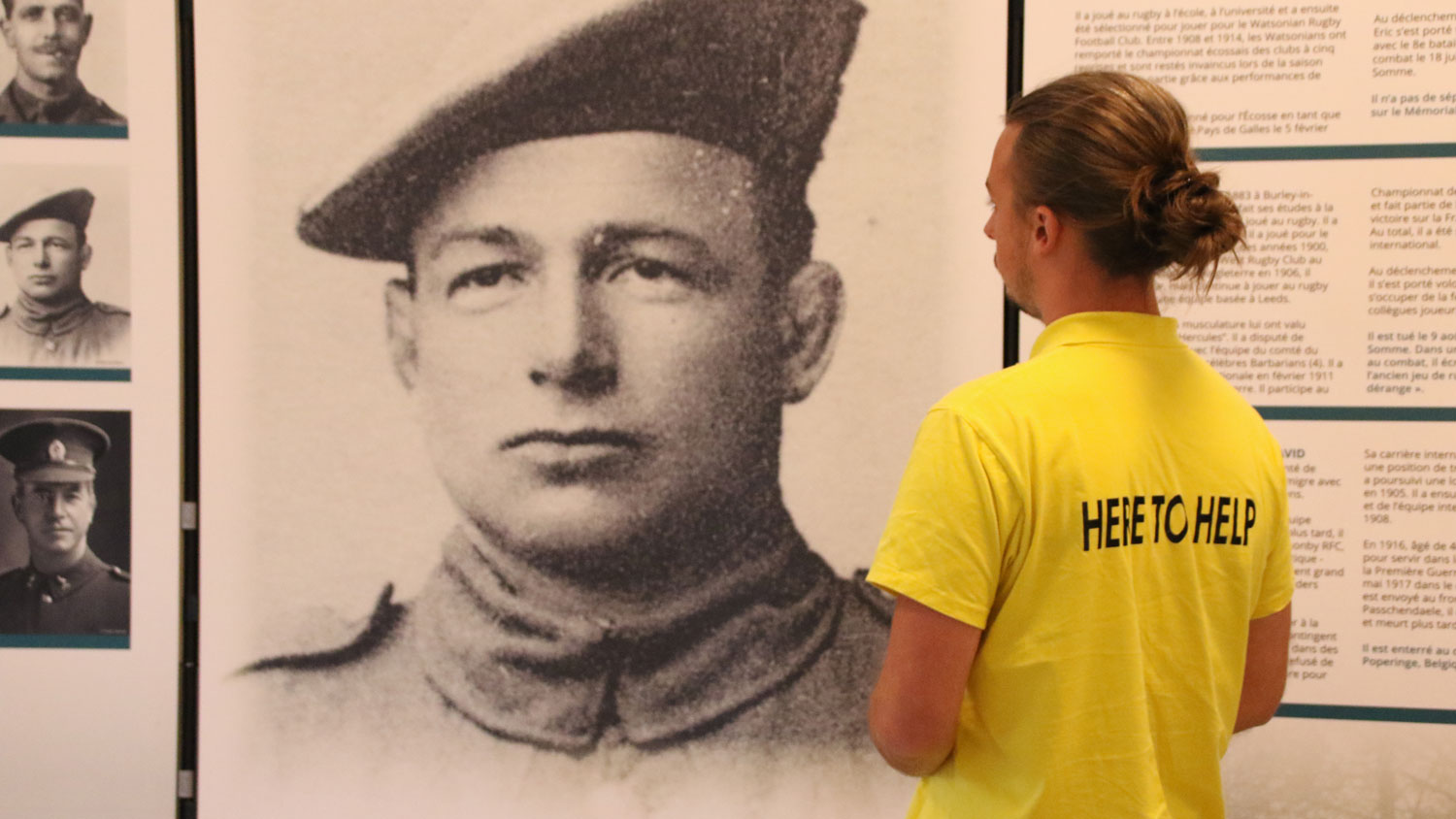
Lance Corporal John Abbott King – England Rugby International 1911-1913
The Commonwealth played a big part in Lance Corporal John Abbott King's life before he joined the Armed Forces.
He was born in North Yorkshire where he played rugby at Giggleswick School but, as a young man, King moved to South Africa.
In the early 20th century, it was common practice for men to move to Commonwealth countries alone to set up their own farm or work in booming industries.
His passion for rugby remained so he joined Durbanville Rugby Club in the early 1900s and then Strand Somerset West Rugby Club.
A few years later, in 1906, King returned to Yorkshire to take over the family farm and joined Leeds-based rugby club Headingley.
At 5ft 6in, the farmer's height and muscular build earned him a revealing nickname, indicating his rugby prowess, as Ms Howson explains, saying: "I love the idea that he was called Pocket Hercules.
"I think that really allows you to imagine what kind of a player he would have been on the pitch, even without video for us to watch to see him in action."
King played 46 games with the Yorkshire County team and four with the world-famous Barbarians.
In total, King played for England 12 times and took part in the Five Nations Championships in 1911, 1912 and 1913.
Just two years later, King joined the British Army's Yorkshire Hussars and went to France in April 1915.
In his early 30s and keen to see more action, LCpl King transferred to 1/10th (Liverpool Scottish), Battalion, the King's (Liverpool) Regiment in 1916 – a move that was to seal his fate and end in his death.
He was killed fighting in the bloody Battle of the Somme on 9 August 1916 and because he has no known grave his name is on the Thiepval Memorial.
Following LCpl King's death, his sisters were left to run the family farm by themselves but the late soldier's friends from his rugby-playing days offered to help during harvest.
Ms Howson said: "I just think that really speaks to the comradeship and the friendly supportive relationships that you can have not just in a rugby team but, of course, in a military unit as well.
"They wouldn't leave them without help if they needed it if they were around."

Serjeant David Gallaher – New Zealand Rugby International 1903-1906
As a young boy, David Gallaher moved from County Donegal, Ireland, to New Zealand where he developed a love for rugby and made a name for himself.
In 1895, Gallaher joined Auckland's rugby club, Ponsonby RFC, where he developed his skills on the pitch.
Six years later, Gallaher lied about his age – claiming he was three years younger – to serve in the Boer War in South Africa but refused to fire on the enemy and instead volunteered to collect the wounded.
Upon his return to New Zealand, Gallaher began playing for the Original All Blacks and was appointed captain just two years later.
In 1908, the Boer War veteran was coaching his old team – Ponsonby RFC – and the New Zealand national team.
By the outbreak of the First World War, Gallaher was in his 40s, playing club rugby and working at the Auckland Farmers Freezing Company.
However, following the news of the death of his younger brother in France, Gallaher enlisted in July 1916, determined to, once again, join the war effort.
Ms Howson said: "He arrived with a New Zealand contingent on the Western Front in Spring of 1917... and served in Belgium.
"Unfortunately, it was in Belgium where he... was wounded and he died of his wounds that same day.
"The Commonwealth War Graves Commission is very honoured to look after his grave.
"He has a known grave with a headstone over it in our Nine Elms Cemetery, which is near the Belgian town of Poperinge."
Sjt Gallaher, one of 13 All Blacks to die during the First World War, is the inspiration behind the Dave Gallaher Trophy, a rugby union match played between New Zealand and France since 2000.




